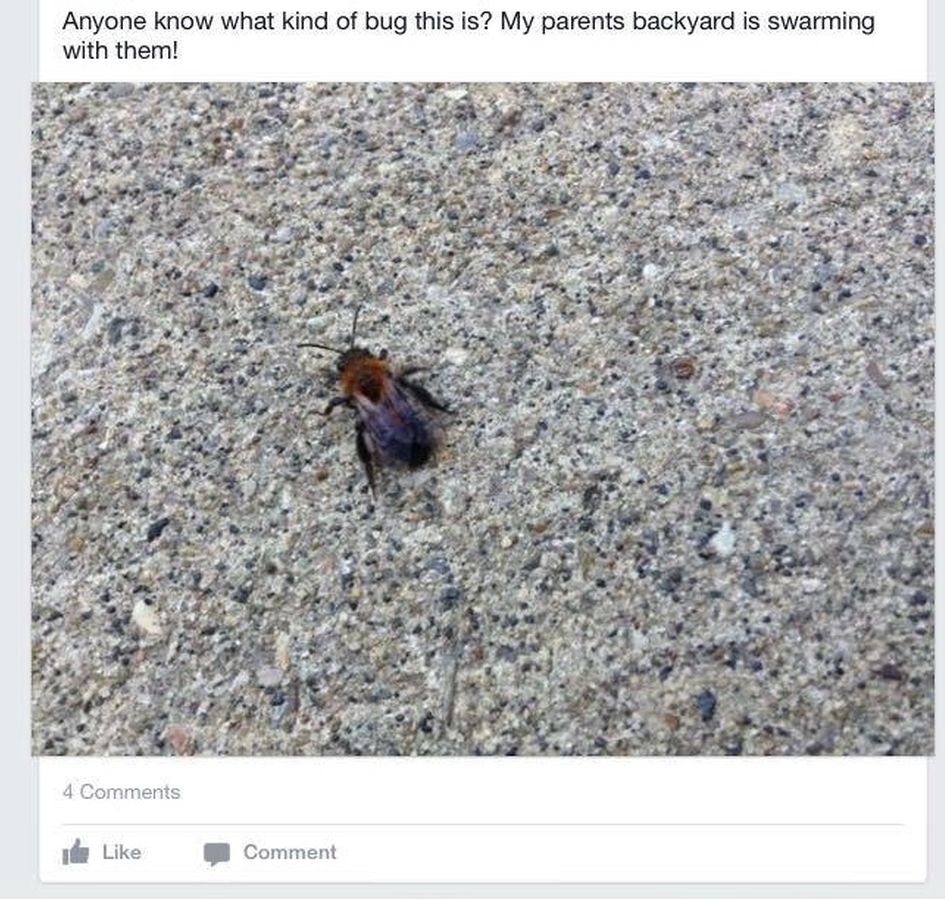Folks in south Edmonton are grappling with some mysterious visitors.

Several people have posted messages about a large presence of fuzzy bugs resembling a small bee or fly on the Terwillegar Community League’s Facebook page.
One poster wrote: “Anyone know what kind of bug this is? My parents’ backyard is swarming with them!”
Other neighbours replied, reporting similar “swarms” of the same critter.
“I guess they are some spring pollinator bee,” one viewer mused. She wasn’t wrong.
READ MORE: How you can help save the bees this spring
After looking at a photo, Edmonton’s bug expert Mike Jenkins said it’s likely a mining bee.
“Mining bees are often active first thing in the spring, taking advantage of early-blooming flowers,” said Jenkins, who’s the City of Edmonton’s biological sciences technician.
Mining bees – or Andrena milwaukeensis – build their nests in the ground, often in and around shrubs.
“Although they build their nests in large aggregations, sometimes appearing to be a ‘swarm,’ they are actually solitary nesters,” Jenkins said. “Each female builds her own nest, and feeds her own larvae.”

And, they’re not dangerous.
“Unlike the social hymenoptera — like honeybees, bumblebees, or yellowjackets — solitary bees like the mining bees rarely even defend their nests,” Jenkins said.
Plus, their stingers are too weak to even penetrate human skin.
Jenkins says there’s another reason you shouldn’t swat.
“As native pollinators, these bees are very beneficial.”
He says they’ll even choose to pollinate early-blooming species like willow shrubs or crocuses over invasive European weeds (that honeybees often choose).
READ MORE: How the pesticide believed to be killing the bees could be affecting humans
You might be able to pick out the mining bees for their pale banding on the abdomen. They’re on the small side, are fairly hairy and vary in colour. The females have large, fuzzy facial structures that look like eyebrows and big pollen-collecting hairs.
There are hundreds of Andrena species in North America.




Comments